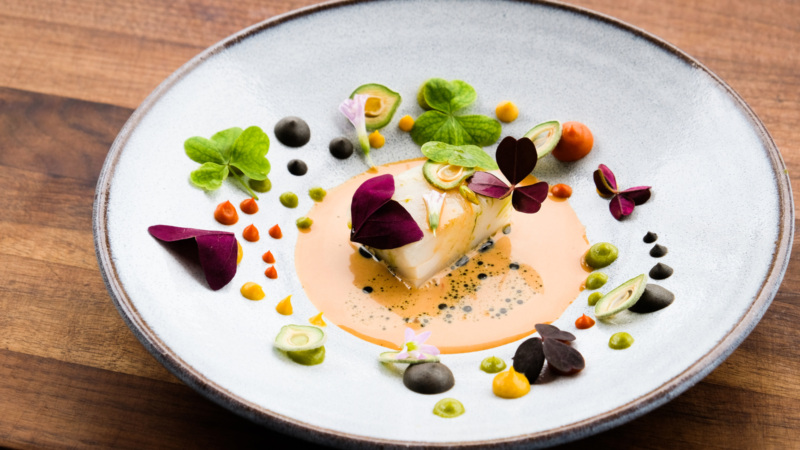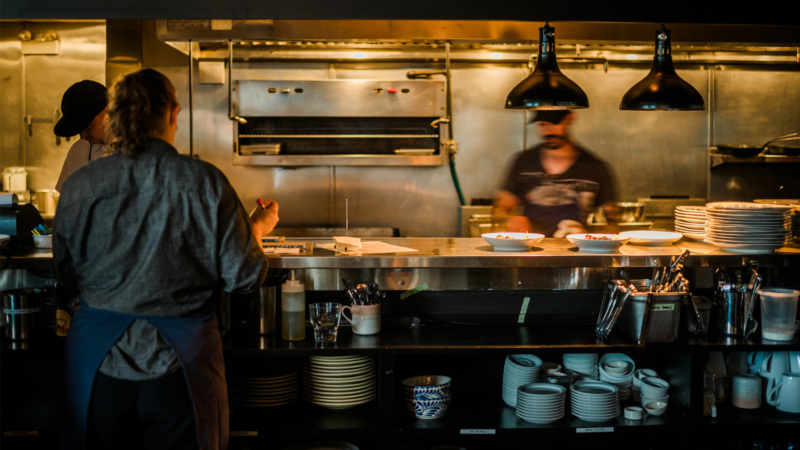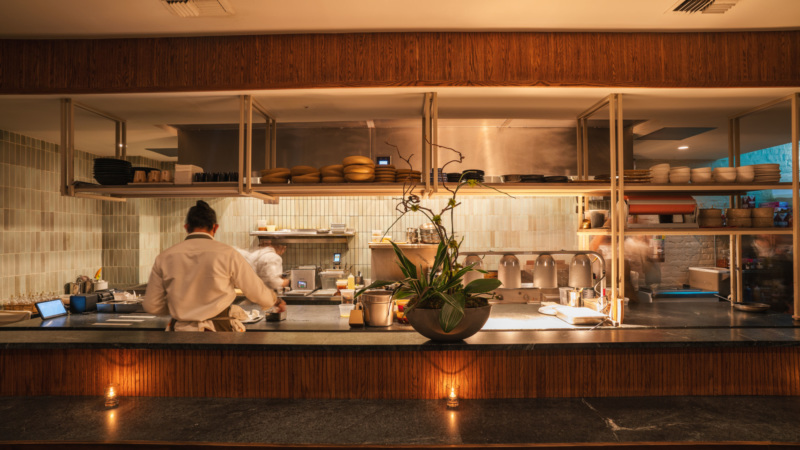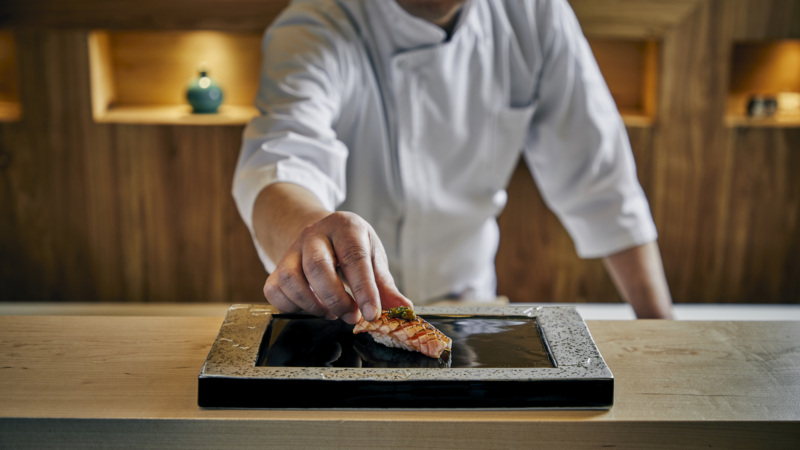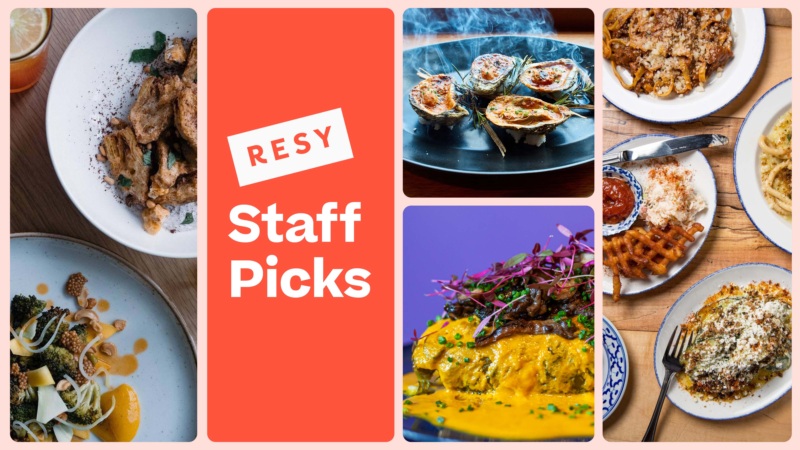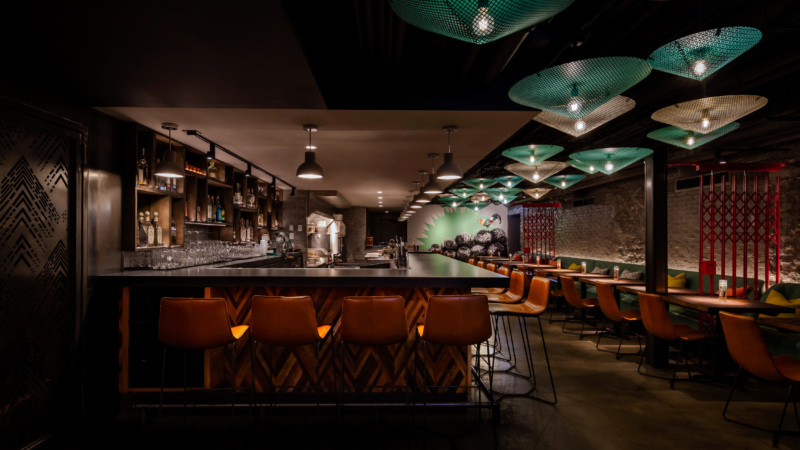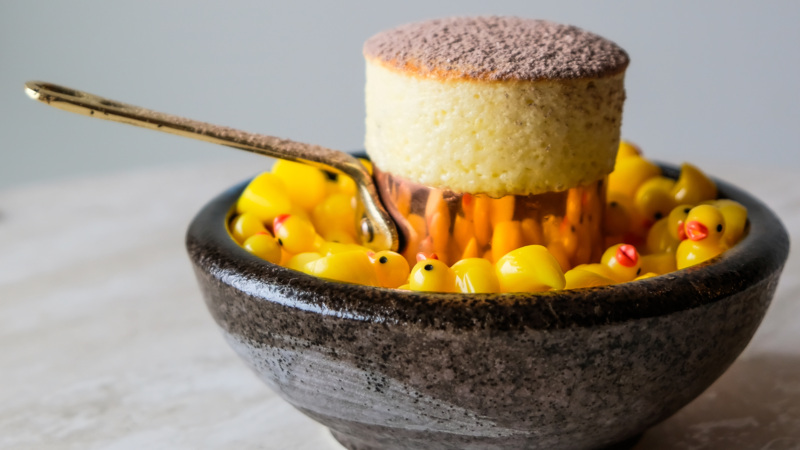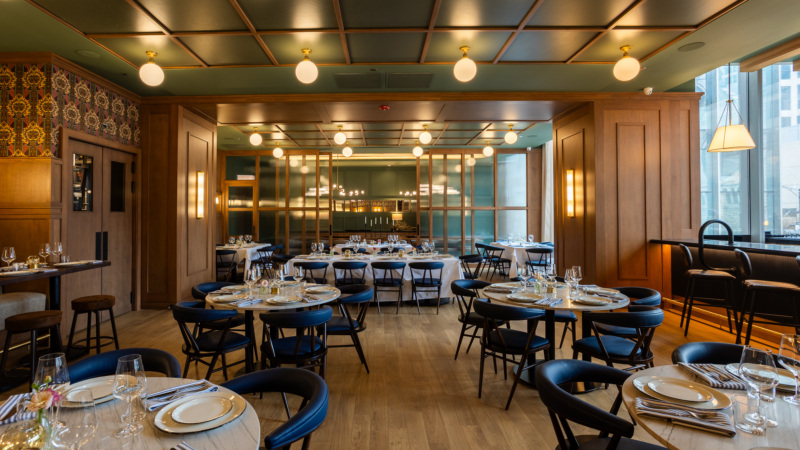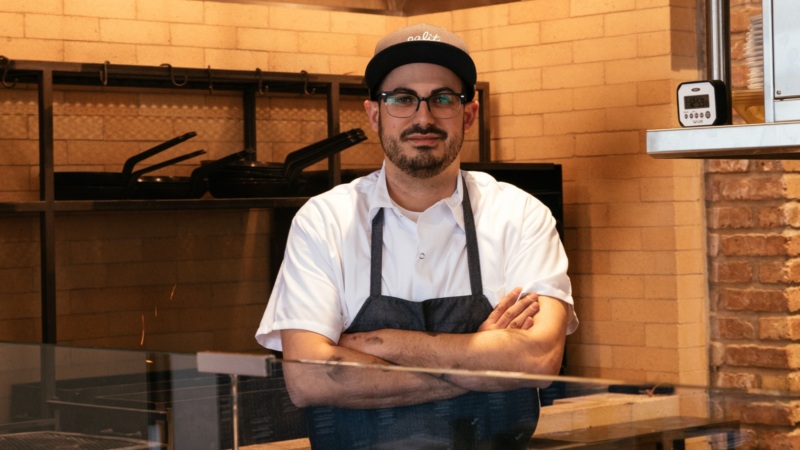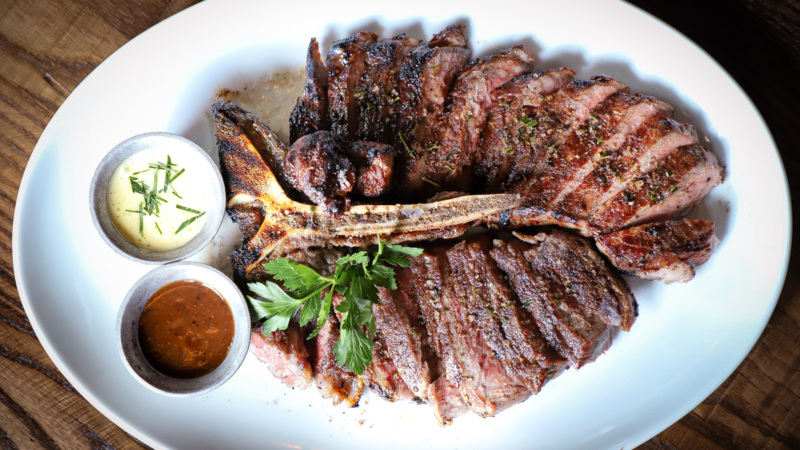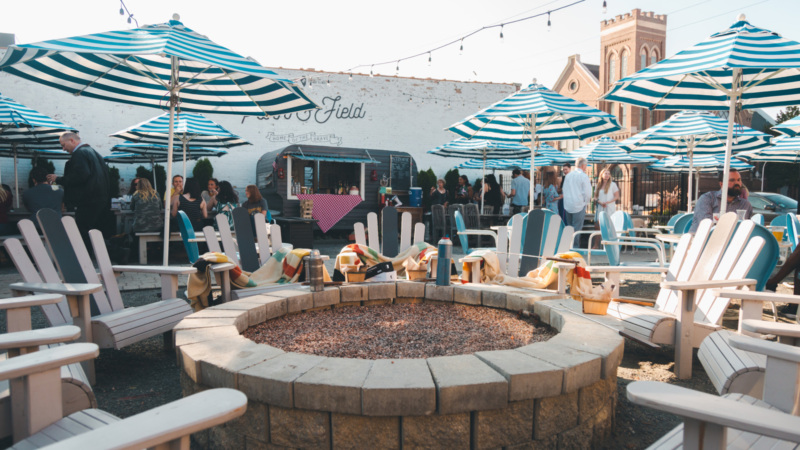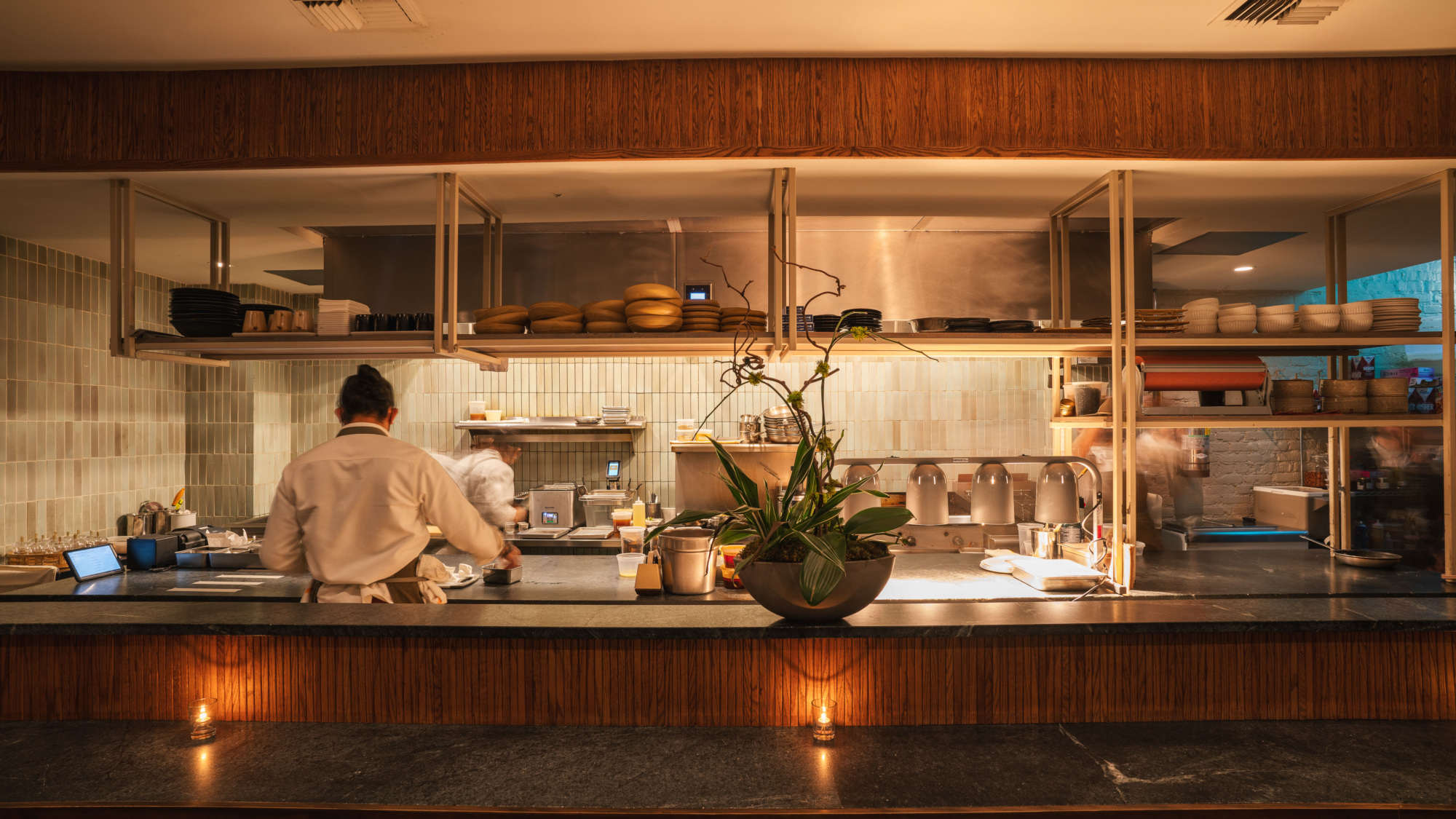
The First Michelin Star for a Filipino Restaurant? This Couple Made It Happen.
When chefs Genie Kwon and Tim Flores, both fine-dining veterans, began drawing up plans for their debut solo restaurant, the Filipino-inspired Kasama, they were adamant that they would not offer a tasting menu. “We were like, ‘Hell no! We’re not doing that,’” laughs Kwon, a pastry chef and veteran of Eleven Madison Park in New York and Flour Bakery & Cafe in Boston.
Their aversion to the trappings of fine dining made sense in the beginning: The married duo opened their Chicago restaurant just a few months into a global pandemic. But they had also always envisioned Kasama as a true neighborhood restaurant — the sort of all-day place you pop by first thing for coffee and one of Kwon’s inventive French pastries, or to grab Flores’ crispy lumpia and garlicky chicken adobo for lunch.
From day one, in July 2020, the neighborhood indeed flocked to Kasama, queuing up along Augusta St. in leafy Ukrainian Village for apple butter-raclette croissants and breakfast sandwiches with custardy egg and housemade longaniza. Acclaim quickly followed, including a James Beard nomination for best new restaurant and similar “best new” nods from Eater and the New York Times.
Through Covid surge after surge — which exacerbated inevitable seasonal lulls — Kasama and its staff of 14 hung on, thanks to a smattering of virtual events, sponsorships, and a long patio season, but most of all, those regulars. Finally, in summer 2021, they hired general manager Kara Czaplicki and bar director Josh Daws, and finally began broaching the possibility of indoor dinner service.
Last November, Flores and Kwon debuted that indoor service, in the form of a 13-course, $185 tasting menu they’d never intended, inspired by the Filipino cooking Flores grew up eating. Although it was a departure from the couple’s original plan, the glaring question of how long Covid would continue informed their decision. In the end, Flores and Kwon decided to do all they could to keep their growing staff intact.
- Everything You Need to Know About Elina’s, and Its Retuned Red-Sauce Classics
- How Mi Tocaya Antojería’s Diana Dávila Sees a Different Side to Chicago Food
- How Galit Defines Its Unique Midwest Take on the Middle East
- The Resy Guide to Outdoor Dining in Chicago
- How To Nab a Seat at Monteverde, and What To Order Once You’re In

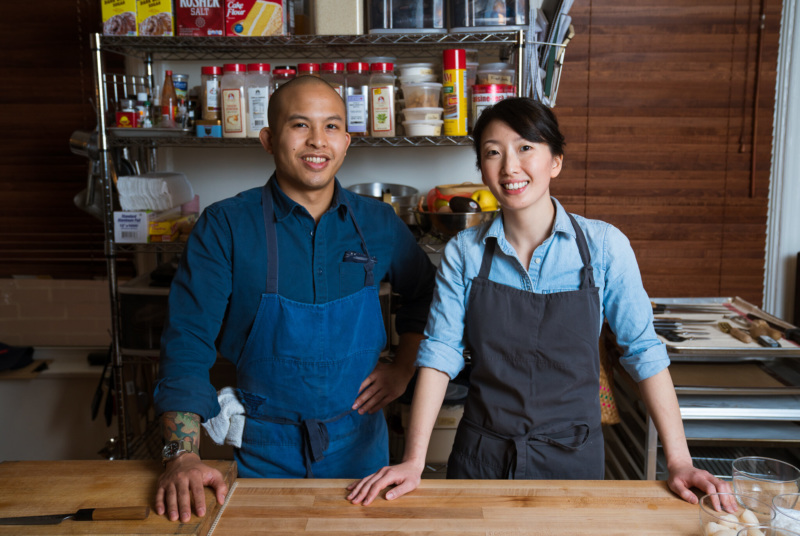
“We still didn’t know what was going to happen in winter — if numbers would surge again and dining would get pulled back,” Kwon says. “We made a pretty strong commitment that if we were going to hire team members we’d have to keep them. So the numbers just made sense to do a tasting menu.”
Serving just three dozen committed diners a night limits customer flow and potential exposure, while also minimizing food waste and controlling costs. The higher price point and lower price sensitivity of tasting menu customers also enables Kasama to pay competitive salaries and cover half of healthcare benefits (through an optional fee added to checks) for its staff of now 40, while capping the workweek at four days. It also afforded Flores the chance to test the creative boundaries of the food he’d grown up eating at places like mom-and-pop Filipino restaurant Ruby’s Fast Food, in Chicago.
“I never thought about doing Filipino food for my entire career until we had the opportunity to open our own restaurant,” says Flores, who worked at Senza and alongside Kwon at fine-dining destination Oriole in Chicago before they opened Kasama. “I want this to be sort of a stepping stone to get into Filipino food, to try and get people to see it in a different light. Why is Filipino food always seen as rustic — with a big bowl of rice and stew and fried things? Why can’t it be paired with wine and cocktails?” That line of questioning, along with inventive tasting menu dishes such as kinilaw (marinated raw fish) with golden kaluga caviar, hamachi, and coconut; and sinigang (sour soup) with Ora King salmon, smoked roe, and tamarind, paid off: Five months later, Kasama became the world’s first Filipino restaurant to receive a Michelin star.
In the case of this mom-and-pop, the idea is to introduce daytime customers to Filipino food via homey tweaked classics, like shaved pork adobo sandwiches with giardiniera, followed by, say, an apple hand pie hug. By night, Kwon and Flores pair their shatteringly crisp lumpia with pretty gruner veltliner, and recast Flores’s mother’s pancit through Spanish colonizers’ lens with scallop conserva, bottarga, and squid ink. They may take down the bakery case and fill the dining room with plants and candlelight each evening to set the tone, but the same unpretentious, cozy atmosphere permeates.

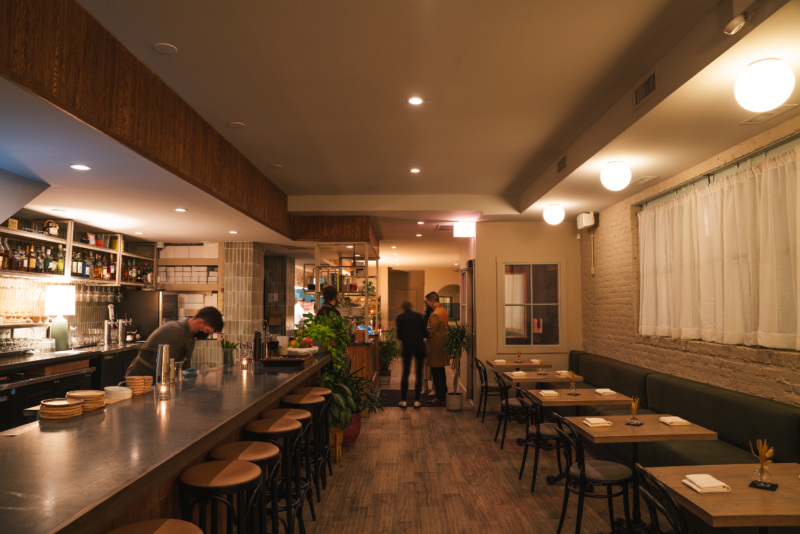
Take Flores’s kare kare, which traditionally consists of stewed oxtails, beef tripe, and tendons in savory peanut sauce with bagoong (shrimp paste) on the side. The uninitiated might find the funk of the bagoong too overwhelming or the chewy texture of the tendon unpalatable. So he swaps in tender sous vide lamb belly for the oxtail, which he glazes in peanut sauce imbued with bagoong for a gentler funk, and pairs the whole thing with housemade flatbread.
“It’s a good example [of our style] because it’s not that authentic,” Kwon says. “The way he does it is still respectful and gives you an idea of what the dish is supposed to be like — rich and unctuous — but we don’t serve it like it is traditionally, with a ton of rice or in a stew format.”
Flores jumps in to elaborate further on the bagoong, which he composes like a Chinese XO sauce with dried shrimp, scallops, and ham cooked down into a chile oil. “I was looking into kare kare’s roots, which some people say Indian spice traders in the Philippines made when they were craving curry,” he says. “Then others say it has Malayan influence. But the creamy texture, which almost looks like a tikka masala, made me want to eat it with flatbread rather than rice. There are so many influences on Filipino food, from all the people who’ve come through the islands.”
Conversations with Flores and Kwon tend to unfold like this — with one deferring to the other before picking the thread back up and going deeper. Then again, they’ve never been big on boundaries. The couple wore matching jumpsuits to the James Beard Awards; and lived in an 8- by-10-foot apartment above Kasama (which they also own) for its first six months. Around 2 or 3 a.m., Kwon would pad downstairs to check the proof on her brioche and eclair-shaped danishes before going back to sleep for another hour or two. She’d start baking around 4 a.m. while Flores slept a bit longer, or until someone on staff inevitably popped upstairs to retrieve extra coffee filters or cups for the breakfast rush.


Even now that they’ve moved into an apartment four blocks away, Kwon and Flores rarely leave Kasama, or each others’ sides. Their days run 15 hours on average — stretching even later now that they’ve added dinner service. Some of their decisions — like not paying themselves that first winter to keep their team gainfully employed — come with the territory of keeping a new small business afloat. But it’s also because the chefs can’t picture themselves out of the weeds just yet.
“This is our life’s work,” Flores says. “It’s not that we don’t care about anything else; we just really, really enjoy what we do.”
“When someone asks me, what are your hobbies? I don’t have any,” adds Kwon with a laugh. “Tim and I, we’re just always going to be cooks; I can’t get out of that mentality, almost to my detriment.”
It’s indeed getting harder for Flores and Kwon to remain “a couple of cooks” as they uneasily assume the mantle of the “first” Michelin star winner for their cuisine, on the shoulders of those who came before. “I don’t look at it like we’re the first ones to think of or do this,” Flores says. “It’s awesome that everybody in the Filipino community is proud. But [winning a Michelin] was never our intention; it just turned out that way.”
The couple approaches it with the same openness with which they’ve tackled every stage of the unconventional, all-day restaurant they’ve created — as much out of survival as passion. “We’re still fascinated by how this is a machine that keeps running,” Kwon says. “And I’m happy even though we’re here all the time, thinking of what we can do next. We’re probably never going to sleep ever again. But I like providing breakfast, lunch, and dinner, and being able to create different experiences for people no matter their budget.”
Have I mentioned yet that Kasama means “together” in Tagalog?
Maggie Hennessy is a Chicago-based restaurant critic and food writer, whose work has appeared in such publications as Eater, Plate, Food52, Wine Enthusiast and others. Follow her on Instagram and Twitter. Follow Resy, too.










